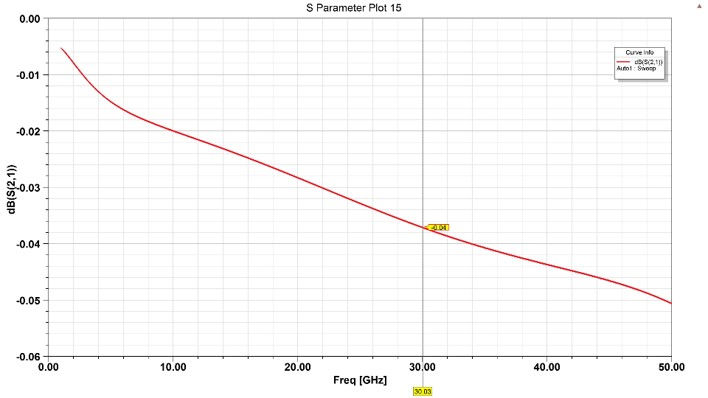Series caps in HSD & RF applications
- Electron One
- Jul 4, 2023
- 2 min read
Updated: Jul 12, 2023
Series capacitors are quite commonly used in high speed digital and high frequency RF applications.
In RF applications, engineers tend to be more careful in component selection and layout when compared to HSD applications. This mainly is because the volume of circuits and interconnects in HSD PCBs are significantly higher when compared to RF PCBs.
Series caps are typically utilised as a DC block when connecting high speed digital serial interfaces where the transmitter and receiver operate at different common mode voltages. They are also widely used to re-bias any part of the circuit - for instance a high-speed DAC / ADC.
Most engineers spend quite a lot of time optimising traces and pad dimensions in a layout while using an off-the-shelf general purpose capacitor as a DC block without much thought on how it impacts the overall insertion and return loss of the interconnect.
Impact of a series capacitor
A quick simulation below show the importance of using purpose designed capacitor in a series interconnect. The simulation is a cut out of part of the interconnect where an impedance controlled trace transitions to the top surface to connect to a capacitor pad.

Figure 1: Simulation set-up with series cap on a Diff Pair Interconnect

Figure 2: Simulated Insertion loss with various series caps

Figure 3: Simulated Return loss with various series caps
As can be seen from the graphs above, there is significant difference in performance of the interconnect when a real world capacitor is used. A standard 1pF C0G cap is probably good up to about 10GHz but starts degrading at higher frequencies quite rapidly.
Purpose designed broadband capacitors are suited for about 30GHz, but not all broadband capacitors are built the same. The Presidio broadband cap that was chosen for this simulation (P/N: LBB0201X103MEPC8) has a much better return and insertion loss characteristic according to its datasheet (see below)

Figure 4: Measured Insertion and Return loss from the datasheet
But when used in real life applications where there are always compromises in design due to space, cost, reliability and yield, its quite challenging to get the same performance as what the datasheet claims.
That said, a -10dB return loss at 30GHz on a real life interconnect is pretty good and is probably above what a serial link like JESD204C needs.
In summary, its important to pay attention to every component, trace, via, solder pad and even solder mask on a HSD & high speed RF interconnect. As digital engineers, we are most likely to look at a eye pattern and start debugging the transmitter when the slew rate is not as expected. Next time, when that happens check if you have the right DC blocking cap in the interconnect first !
Notes:
Prices mentioned for the capacitors are indicative based on information available from mainstream online distributors



